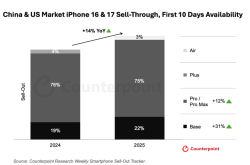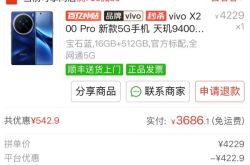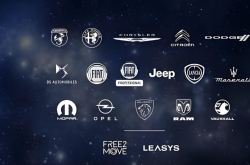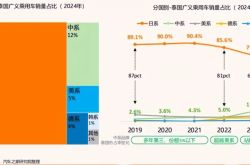Caocao Mobility passes Hong Kong Stock Exchange hearing, Li Shufu embraces his 'tenth child'
![]() 06/19 2025
06/19 2025
![]() 854
854
On June 10, the ride-hailing platform Caocao Mobility passed the Hong Kong Stock Exchange hearing, just one step away from listing.
According to the prospectus, Ugo Investment Limited is the largest shareholder of Caocao Mobility, holding 83.9% of the shares, and this investment company is 100% controlled by Li Shufu, Chairman of Geely Automobile.
Currently, Li Shufu controls nine listed companies, including Geely Automobile, Volvo Cars, Polestar, Ecarx, Qianjiang Motorcycle, Lotus Technology, Qianli Technology, Zeekr, and the recently delisted Hanma Technology.
This also means that Caocao Mobility will become the tenth listed company controlled by Li Shufu.

However, for investors, the most concerning question is whether Caocao Mobility, endorsed by Geely and Li Shufu, will be a valuable blue ocean in the future.
What is the value of Caocao Mobility?
To be honest, it's a bit embarrassing for travel platforms to list now.
Previously listed ride-hailing platforms like Dida Chuxing and Ruqi Chuxing both broke their issue price on the first day of listing, and their share prices have continued to decline since then.
Dida Chuxing fell by 70% last year and nearly 30% in the first half of this year.
Ruqi Chuxing followed a similar pattern, falling by 60% last year and nearly 30% in the first half of this year.
Even more disheartening is that Ruqi Chuxing's trading volume is now almost negligible, making it a so-called "penny stock" among investors.
With previous examples to learn from, Caocao Mobility's listing is indeed worrisome.
Seeing this, it's inevitable to ask why ride-hailing platforms listed in recent years have not been favored.
Frankly speaking, the imagination of second-tier ride-hailing platforms is too limited.
First, the situation of Didi's dominance has long been established, occupying 70% of the market share and being in an absolute monopoly position in the industry. More critically, second-tier platforms have lost the opportunity for further competition.
With a 5% market share, Caocao Mobility ranks second among ride-hailing platforms, but it is still more than ten times smaller than Didi.
When Didi was suspended in 2021, it gave second-tier platforms an opportunity, but it mostly benefited aggregation platforms, with Gaode Maps now occupying about 20% of the market share.
Later, with Didi's return, the opportunities for second-tier platforms were lost. Caocao, T3, and Xiangdao now rely more on aggregation platforms, becoming "workers" for them.
For example, from 2022 to 2024, orders from aggregation platforms accounted for 49.9%, 73.2%, and 85.4% of Caocao Mobility's GTV, respectively. Correspondingly, Caocao Mobility also has to pay a large amount of "traffic fees" to aggregation platforms. In 2024 alone, Caocao Mobility paid over 1 billion yuan in commissions to aggregation platforms.
The opportunity in 2021 was missed, and now that Didi's profitability is becoming more stable, there are even fewer opportunities for second-tier platforms.
Unlike food delivery platforms like Ele.me and JD Daojia, which can still compete with Meituan, second-tier ride-hailing platforms now have their traffic entry points controlled by others, making it impossible for them to even compete.
Interestingly, Didi itself also adopts an aggregation platform model, with some of Caocao Mobility's orders being dispatched by Didi.
This obviously shows that Didi does not take competition from second-tier platforms seriously, as if looking through a telescope and not being able to find an opponent.
In other words, the reason why second-tier platforms can still exist today is that the Chinese market is too large for Didi to fully consume, providing a basis for their continued operation.
Therefore, the current position of second-tier ride-hailing platforms is awkward, with room to survive but not much room for growth.
Second, as everyone knows, the travel business requires a lot of subsidies and is extremely costly, with most platforms unable to generate their own revenue.
Take Didi as an example; it achieved annual profitability only in 2023.
Ruqi Chuxing, which recently listed, reported a net loss of 564 million yuan last year and a cumulative loss of 2.5 billion yuan over four years.
It's no wonder that investors are not optimistic about ride-hailing platforms listed in recent years. Even if there is limited market expansion space, investing in them is just like patching up problems.
Returning to Caocao Mobility, as the second-largest player in the industry, will its profitability be better?
Unfortunately, this is not the case.
According to the prospectus, Caocao Mobility's revenue from 2022 to 2024 was 7.63 billion yuan, 10.68 billion yuan, and 14.66 billion yuan, respectively.
From 2021 to 2024, Caocao Mobility's operating losses were 3.01 billion yuan, 2.01 billion yuan, 1.98 billion yuan, and 1.25 billion yuan, respectively.
The cumulative loss over four years exceeded 8 billion yuan.
Although revenue has increased year by year, and the magnitude of losses has narrowed, the overall loss is still on a massive scale.
Even though it has become the second-largest player in the industry, why does Caocao Mobility seem to be losing more money?
This has to do with its business model and costs.
Unlike Didi's C2C model, Caocao Mobility adopts a B2C model of "public vehicles and certified drivers," with vehicles provided by Caocao Chuxing and Geely, and some drivers being full-time, making it a heavy asset operation.
This model requires a lot of funds for vehicle purchase, maintenance, driver recruitment, training, and subsidies.
From 2021 to 2023, payments to Geely Group and related parties for vehicle purchases (including customized vehicles) amounted to 256 million yuan, 1.323 billion yuan, and 1.77 billion yuan, respectively, totaling approximately 3.3 billion yuan over three years.
As of the end of 2024, Caocao Mobility had a fleet of over 34,000 customized vehicles, the largest in China.
In addition, in 2024, Caocao Mobility's cost of sales reached 13.5 billion yuan, with subsidies and wages for travel drivers accounting for nearly 80% of the total cost.
The heavy asset model incurs more costs, which also means that it will take longer for Caocao Mobility to achieve profitability.
Compared to Caocao Mobility, another second-tier ride-hailing platform, light asset-operated Dida Chuxing achieved profitability in 2021, with a net profit of 1.731 billion yuan, according to Tianyancha APP.
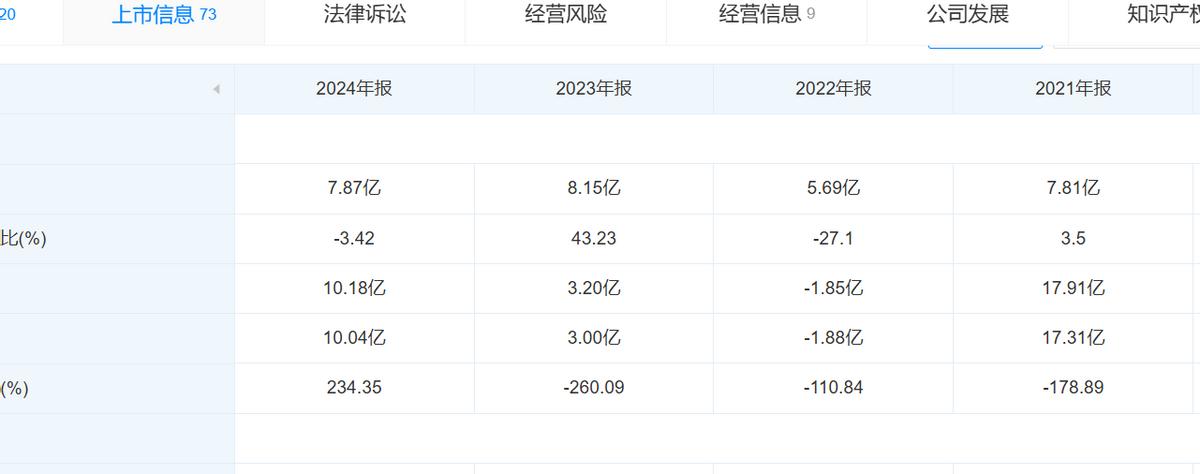
Caocao Mobility also candidly admitted in its prospectus that it cannot guarantee profitability in the future.
Prolonged losses have also increased Caocao Mobility's debt burden.
As of December 31, 2022, 2023, and 2024, Caocao Mobility's short-term and long-term debt was 3.5 billion yuan, 5.2 billion yuan, and 5.7 billion yuan, respectively;
The long-term portion of long-term debt was 2.1 billion yuan, 2.4 billion yuan, and 1.5 billion yuan, respectively.
As of the end of 2024, Caocao Mobility's asset-liability ratio exceeded 200%, putting considerable financial pressure on the company.
From a financial perspective, Caocao Mobility also needs to use this listing to alleviate its financial pressure, especially regarding bank debt.
However, from an investor's perspective, the capital market values visible expectations. Currently, Caocao Mobility resembles a "gold-swallowing beast" that only takes in money but is difficult to get out of. Without sufficient imagination, it may end up sharing the fate of Ruqi Chuxing and Dida Chuxing...
So, does Caocao Mobility still have room for imagination in the future?
Can Caocao Mobility tell a good story about Robotaxi?
When it comes to the greatest imagination in travel today, it's undoubtedly the self-driving cars that frequently hit the headlines.
The operation of driverless cars has naturally become a relatively easy story for Caocao Mobility and other platforms to tell.
Moreover, similar to last year's Ruqi Chuxing, Caocao Mobility has indicated that a portion of the funds raised in the future will be invested in autonomous driving.
To be honest, in terms of storytelling alone, Caocao Mobility has an advantage. The most significant difference between it and Ruqi Chuxing and Dida Chuxing lies in the timing of its listing.
In July last year, Luobo Kuaipao suddenly became a hit.
At that time, ride-hailing platforms were the first to be affected, as self-driving technology fundamentally challenged the operating model of ride-hailing.
This was quite embarrassing. Dida Chuxing listed on June 28 and broke its issue price on the first day; while Ruqi Chuxing, although riding on the concept of being the "first Robotaxi stock," did not receive a positive response from the capital market, breaking its issue price on July 10 upon listing.
Part of the reason may be that Baidu's Luobo Kuaipao had a significant impact, causing investors to worry about Ruqi Chuxing's competitiveness and commercialization capabilities in Robotaxi.
However, Caocao Mobility witnessed the explosion of Luobo Kuaipao and has had a year of adequate preparation, making it more capable of telling its story.
We can now see some practical actions from Caocao Mobility.
For example, on February 28 this year, Caocao Mobility announced the official launch of its intelligent driving platform and initiated Robotaxi pilot operations in Suzhou and Hangzhou.
In March, Caocao Mobility planned to launch customized Robotaxi models designed for L4 autonomous driving by the end of 2026.
In the past year, Caocao Mobility has actively demonstrated its commercialization progress in autonomous driving. Now that the crucial moment has arrived, the capital market should be more willing to buy into it, right?
Actually, it's not that easy.
Rationally speaking, the large-scale commercialization and popularization of Robotaxi are still far away, with a long way to go in terms of policy support and technological maturity.
For example, when facing complex and uncertain road environments, algorithms may still be unable to make accurate judgments.
The system may not be able to promptly identify suddenly appearing pedestrians or react quickly to non-standard objects. In special circumstances, the algorithm needs to make the correct response within milliseconds, which is undoubtedly a huge challenge.
However, the reality is that this cannot be achieved yet, and Robotaxi still requires human intervention to compensate.
Even the most cutting-edge Luobo Kuaipao, although already labeled as L4 autonomous driving, is still not fully mature, requiring safety officers to monitor driving conditions to respond to extreme situations.
This means that current L4 driving still cannot do without human intervention, and human labor is the biggest cost in ride-hailing, which cannot be significantly reduced for the time being. Naturally, it cannot completely replace existing ride-hailing services.
Just like smartphones, whose prices cannot be reduced, the previous Nokia market was not quickly replaced.
This is just the technical challenge that makes large-scale popularization difficult. It does not take into account factors such as ethics, policies, and legal and regulatory improvements.
This also means that the large-scale commercialization of Robotaxi is likely to be a protracted battle.
A protracted battle also means a battle of costs. Both technological research and development and current commercial operations of autonomous driving still require long-term and massive funding support.
Caocao Mobility has lost 8 billion yuan in the past four years and cannot guarantee profitability in the future. Even if the capital market strongly supports it in the short term, in the long run, it may raise questions about its ability to sustain the battle.
In addition, it remains to be seen whether future giants in the driverless ride-hailing industry will emerge from current ride-hailing platforms.
Domestically, the more successful player is Luobo Kuaipao, backed by Baidu, with an Internet background.
Huawei also has strong technical capabilities, and its situation speaks for itself.
Internationally, Waymo, backed by Google, is the best in the field of driverless taxis in the United States, similar to Luobo Kuaipao, with an Internet search background. Tesla is also planning to mass-produce its driverless taxi, the Cybertruck, in 2026.
In contrast, Uber, the world's largest ride-hailing platform, does not possess cutting-edge technology. Instead, it sold its autonomous driving division to Aurora in 2020, indicating a shift toward collaboration with external companies in autonomous driving.
Domestic players like Didi are also following suit without core technological advantages.
Overall, it seems that the top players in global Robotaxi deployment and technology are not ride-hailing platforms.
Therefore, for Caocao Mobility to engage in Robotaxi, the formidable competitors may not just be Didi but also Internet giants and Geely's competitors.
Although Caocao Mobility's intelligent driving technology is supported by Geely, Geely's autonomous driving technology still requires cooperation with Huawei, indicating that its strength is somewhat lacking.
In the future of large-scale Robotaxi deployment, there are too many variables, so how can Caocao Mobility reassure investors?
Nevertheless, I still hope that Caocao Mobility can demonstrate the indomitable spirit of Cao Cao, an old steed willing to go a thousand miles, and ultimately carve out a piece of the trillion-dollar Robotaxi market.
Disclaimer: This article is based on the company's statutory disclosure content and publicly available information for comment, but the author does not guarantee the completeness or timeliness of this information. Additionally, the stock market is risky, and investors should be cautious. This article does not constitute investment advice, and investors must make their own judgments.


